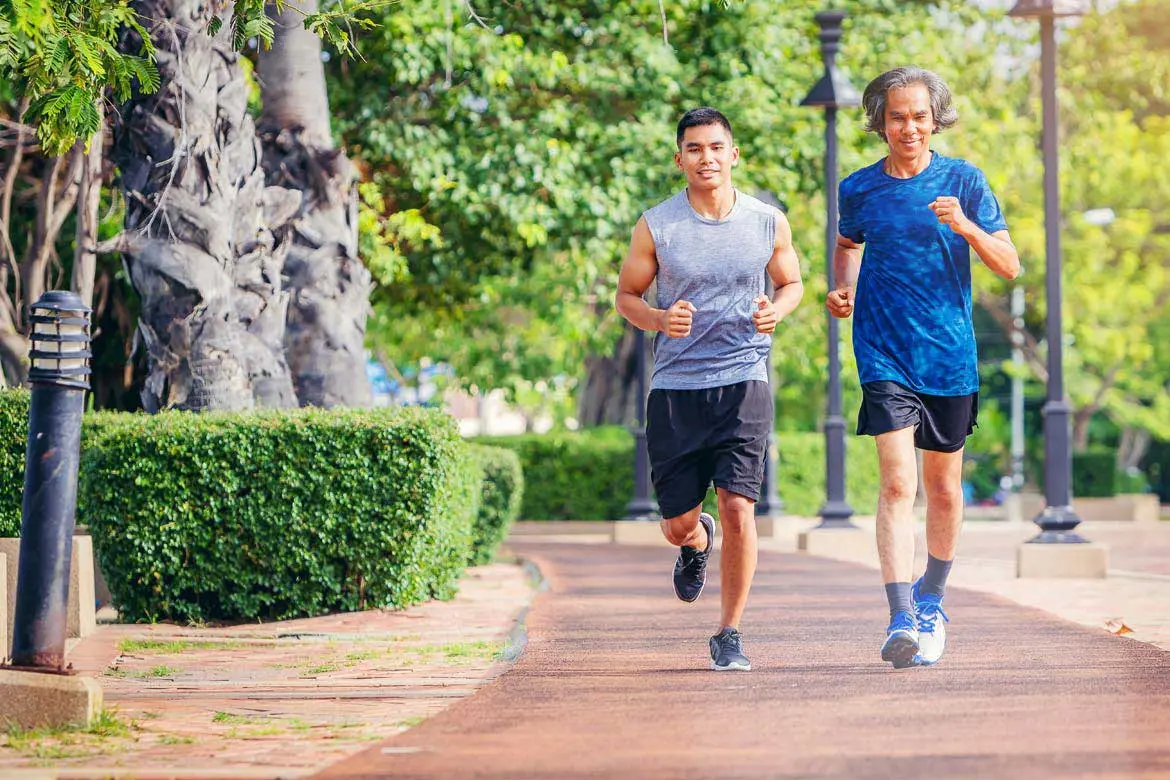Dr Ng Zhaowen Dennis
Orthopaedic Surgeon


Source: Shutterstock
Orthopaedic Surgeon
The new normal has seen people in Singapore embrace nature, from cycling to running, hiking and casually spending time exploring our sunny island on foot. An active lifestyle is great for our overall health, but they also come with the risk of injuries, especially when too much is attempted too soon or without adequate conditioning.
For example, exploring a new trail is exciting, but a slip or fall can result in a nasty experience that can range from something minor like a cut, to something that takes a longer time to heal, such as a sprain or fracture.
Here are some injuries that are commonly linked to sports:
A sprain is an injury that affects the ligaments – tough bands of tissue that connect the bones and joints. It often occurs as a result of a quick twist or an awkward movement such as a fall, or missing a step.
Commonly referred to as 'pulling a muscle', these result when there is tearing in the muscle fibres of our tendons, which usually happen with sudden or repetitive movements. A strain can lead to issues such as muscle spasms, tenderness, swelling, cramping and restricted movement. Most strains occur at the knees, ankles, shoulders and back. Fortunately, they can heal on their own, especially with rest, ice, and elevation.
One of the most common causes of heel pain, this injury is common in runners. Individuals who are overweight, as well as those who wear shoes with inadequate support, tend to have a higher risk of plantar fasciitis.
Also known as broken bones, fractures occur when the force exerted on a bone is stronger than it can bear.
These are minor wounds that involve breakage of the skin. They can occur relatively easily, for example, when you fall and scrape your skin against the pavement, or brush past some bushes.
Swelling is a natural result of injury. This can happen when you overstrain yourself, for example, from climbing up the many flights of stairs on the Marang Trail at Mount Faber, or going for a day-long cycling trip on Pulau Ubin Island, after leading a sedentary lifestyle for years.
This is a type of overuse injury that causes pain in the legs, due to overworked muscles, bone tissues and tendons. This, however, has been more closely linked to athletes who typically have intensive training regimes.
This happens when a bone is forced out of its socket. This is not a common injury, but it can be very painful and will require medical attention.
A concussion is a mild traumatic brain injury. It can happen after an impact to your head, or an injury that causes your head and brain to shake back and forth quickly. Such an injury can cause symptoms such as dizziness, balance issues, nausea, and chronic headaches.
Should any of these injuries occur, do not hesitate with seeing a doctor, or even an orthopaedic specialist because early treatment and intervention can help ensure a quicker recovery.
Staying active can be both an enjoyable and safe event, as long as you do it right.
Here are some tips:
If you're new to any form of exercise, it's best to start gradually and let your body adjust to the unfamiliar movements before increasing intensity. This will help reduce the likelihood of injuries such as strains. Do consult your doctor prior to commencing any new activity, especially when you have pre-existing medical conditions, or have doubts over your physical condition.
Do warm up before any activity, as doing these helps you ease in and out of each exercise session. Warming up helps to prepare your body for exercise, by raising its temperature to increase blood flow to important muscles and organs. It also enhances the range of movement in joints, reduces muscle soreness, and minimises the risk of injury.
Different types of exercise require different postures and stances. For example, one way to prevent running injuries is to try to land lightly, to reduce the impact on the knees and feet. Always find out about the proper way to move before starting your exercise, especially new ones.
Using the right equipment also means better safety and comfort. One example is to wear the right shoes for walking or running – choose shoes that are made for that particular activity, and make sure that they fit well. Some people with certain medical conditions such as spurs or flat feet may find more comfort and support in a pair of orthopaedic shoes.
Too much exercise can actually be a bad thing, especially when your body cannot adjust to a sudden increase in activity intensity.
If you are starting out a new exercise regime, watch yourself to make sure you are not pushing your limits more than you should. This also applies if you have sustained an injury – if you are hurt, ensure that you are healed before starting the activity again, instead of working through the pain. Consult your doctor should you have any doubts over whether an injury has healed or if it is safe to return to an activity following an illness or injury.
It's always important to stay hydrated, whether you are exercising or not. This is especially important in Singapore's sweltering weather, where our bodies lose water easily. Our muscles become tense as we lose water during physical activities – this can then lead to muscle tension and cramps, which in turn, increase the risk of injuries such as muscle sprains. Always bring along a bottle of water when you head outside.
If you suspect you have a sports-related injury, especially one that has been troubling you for some time, do consult an orthopaedic specialist for advice. If you experience a sudden and severe pain after playing sports, please seek medical attention immediately.